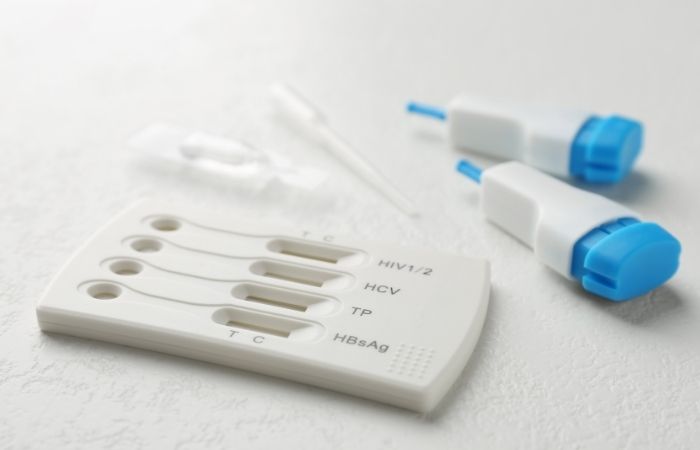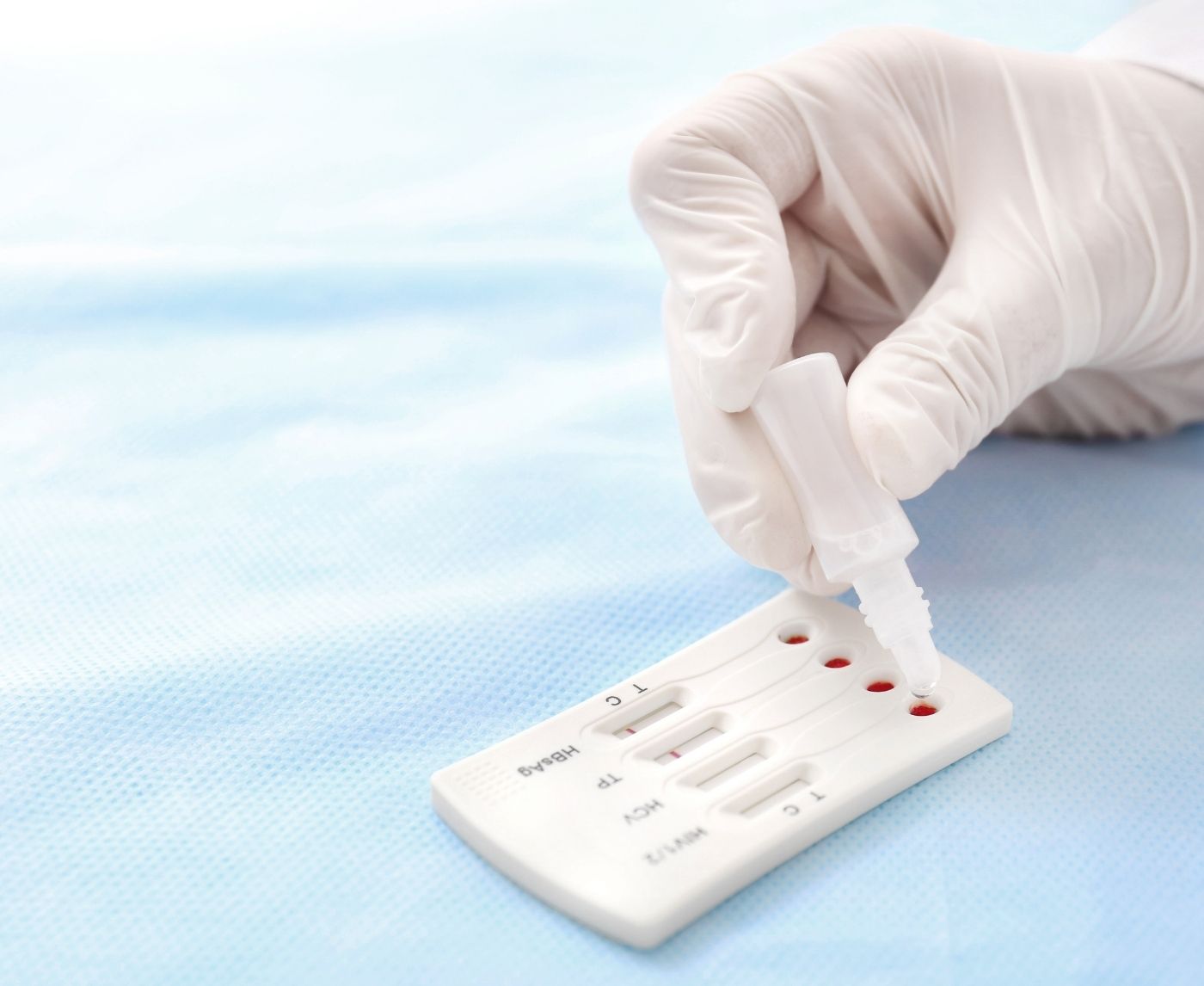Quick Answer: You can test for syphilis, herpes, chlamydia, and more without ever seeing a doctor. At-home STD kits offer accurate, private testing using finger-prick blood or swab samples, with results in minutes or days, depending on the kit.
Who This Is For (And Why This Isn’t Just About “Convenience”)
Maybe you’ve been burned, by partners or providers. Maybe you’re queer and tired of being pathologized, or maybe you’re a woman who’s been told her pain is “in her head.” Or maybe you're just scared, uninsured, or living somewhere rural where clinics are 45 miles away and staffed by people who know your mom.
This is about dignity, privacy. It’s about taking care of yourself when shame, fear, or logistics make traditional testing feel impossible. Whether you’ve got a new partner, a weird bump, or a gut feeling, this guide walks you through the STD home testing process, minus the judgment, minus the white coat.
We’ll talk about what home STD tests actually detect, how they work, how accurate they are, and how to handle your results, especially if they’re positive. No scare tactics. No fluff. Just straight facts, lived experiences, and science you can actually use.
What Counts as an STD Test, And Which Ones You Can Do at Home
The term “STD test” covers a bunch of different methods depending on the infection. For syphilis, it's usually a blood test. For herpes, it could be blood or a swab. For chlamydia or gonorrhea, labs use what's called a NAAT, basically, a genetic test that finds even tiny traces of bacteria.
Here’s what you can do at home: You can order a discreet test kit that uses one of three sample types: - Finger-prick blood (for syphilis, HIV, herpes) - Vaginal or urethral swabs (for chlamydia, gonorrhea, trichomoniasis) - Urine samples (some kits offer mail-in versions for lab analysis)
The key difference? Some home kits give you results right there, within 10 to 20 minutes, while others require you to mail your sample to a lab and wait a few days. But both are real tests. They follow the same science, just minus the fluorescent lights and paper gowns. According to CDC guidelines, many FDA-approved home kits meet clinical standards when used correctly.
You can order a discreet syphilis test kit or go with a combo kit that screens for multiple infections at once.

People are also testing: STD in My Eye? The Truth About Herpes, Pink Eye, and That Weird Burning
Why Timing Matters: The STD Window Period Problem
One of the biggest myths about STD testing is this: “I had sex on Saturday, and I got tested Monday, so I’m good.” Not quite. The test can only detect what your body has started to react to, or what the infection has built up enough to show. That time gap is called the “window period.”
During that window, you could have an infection and still test negative. That’s not a test failure, it’s biology. Some tests, like NAATs for chlamydia and gonorrhea, can detect infections as early as 5–7 days post-exposure. But others, like syphilis or HIV, need more time for antibodies to appear.
| STD | Sample Type | Home Test Option | Typical Window Period |
|---|---|---|---|
| Syphilis | Finger-prick blood | Yes | 3 to 6 weeks |
| Herpes (HSV-2) | Swab or blood | Yes | 2 to 12 weeks |
| Chlamydia | Swab or urine | Yes | 5 to 14 days |
| Gonorrhea | Swab or urine | Yes | 5 to 14 days |
| HIV | Blood | Yes | 2 to 6 weeks |
Figure 1. Window periods vary by infection. Testing too early may lead to false reassurance, always confirm timing based on risk.
Rapid Test vs Lab Test vs Clinic: What’s Really the Difference?
Think of it like coffee: you’ve got instant, drip, and barista-level espresso. One’s fast and gets the job done. One’s slow but solid. One’s high-end with bells and whistles. STD testing has a bunch of options too: rapid tests offer instant results at home, mail-in labs give more sensitivity and clinics add exam options, but also come with more potential judgment, exposure, and time.
| Method | Privacy | Speed | Accuracy | Best For |
|---|---|---|---|---|
| At-Home Rapid Test | High | 10–20 minutes | Moderate–High | Quick answers, discretion |
| Mail-In Lab Kit | Moderate–High | 2–5 days | High | Lab-grade sensitivity without clinic |
| Clinic Visit | Low–Moderate | Same day–1 week | Very High | Complex symptoms or confirmatory care |
Figure 2. Each method has pros and cons, it's about what works for your body, your schedule, and your mental health.
Case Study: “I Tested Too Soon and Regretted It”
Ty, 27, had a panic attack after waking up with a dry, irritated spot near his groin. He hadn’t had symptoms before, but this didn’t feel right. “I ordered a test immediately, tested on day five. It was negative. I felt relieved. But two weeks later, that spot turned into a blister.”
He tested again at day 18. This time? Positive for HSV-2. “It crushed me. But also? It explained everything. I just wish I’d waited a few more days. Or known that the first test wasn’t the final answer.”
"I thought I was being proactive. But I didn’t understand the window period. The result wasn’t wrong, I just jumped the gun."
If you're spinning, overwhelmed, or just unsure whether your timing is right, know that there are options. You don’t have to guess. You don’t have to wait for symptoms to explode.
This at-home combo test screens for the most common infections, discreetly and quickly. Peace of mind could be just one test away.
Check Your STD Status in Minutes
Test at Home with Remedium10-in-1 STD Test Kit

 For Women
For Women Results in Minutes
Results in Minutes No Lab Needed
No Lab Needed Private & Discreet
Private & DiscreetOrder Now $189.00 $490.00
For all 10 tests
What If the Result Is Positive?
You stare at the test window. There's a faint line. Or maybe it's bold. Either way, your brain goes blank. First: breathe. A positive result doesn’t mean you’re dirty, broken, or doomed. It means you have more information than you did yesterday, and that’s power.
Most STDs are treatable. Chlamydia and gonorrhea? You just need antibiotics. Syphilis? Treatable with penicillin. Herpes? Manageable for life, with antivirals reducing both symptoms and transmission risk. The key is not panicking, but acting.
Here’s what that usually means:
Get a confirmatory test if needed (especially for herpes or HIV). Reach out to a provider or telehealth service. Many offer treatment plans remotely, no judgment. Let partners know, anonymously if you prefer. Most states have anonymous notification services, or you can use scripts from places like Planned Parenthood.
And don’t ghost yourself. A positive result is not a moral failure. It’s a moment. One that many people, millions, go through. According to the CDC, more than 1 in 5 people in the U.S. has an STI right now.
Case Study: “I Thought Testing Would Ruin Me. It Didn’t.”
Jasmine, 34, didn’t tell anyone, not her sister, not her partner. When she ordered a syphilis rapid test, she locked the bathroom door and cried while waiting for the results. “I was sure it was going to be positive. I’d been feeling off, tired, some weird discharge, but no real pain.”
It was positive. But instead of spiraling, she called a telehealth clinic and got antibiotics mailed to her home. She told her partner two days later. “He hugged me. Said it was okay. That we’d figure it out.” She did. They did.
“That test didn’t ruin me. It reminded me I deserve care, even if I made a mistake.”

People are also looking for: The Big 10: Most Common STDs Ranked by Risk, Symptoms, and How to Spot Them
Why Privacy Isn’t a Luxury, It’s the Whole Point
Every barrier you’ve ever faced to testing, cost, judgment, transportation, being outed, fear of needles, starts to shrink when you can test at home. These kits ship in plain envelopes. No one knows what’s inside but you. The instructions are clear. The sample takes minutes. The result is yours, and only yours, to interpret.
There’s no receptionist asking your pronouns like a pop quiz. No icy speculum. No insurance statement arriving at your parents’ house. Just you, your body, and your choice.
Discreet testing isn’t a loophole. It’s a lifeline. And it’s one of the most powerful tools we have to fight stigma, not by avoiding care, but by making it accessible on your own terms.
If you’re feeling that pull, the “maybe I should test” voice that’s been whispering for days, listen to it. STD Rapid Test Kits can help you act on it, safely and quietly.
FAQs
1. Can I really test for STDs without stepping into a clinic?
Yes, no exam room, no paper gown, no judgmental eyebrow raise. With a home kit, you collect your sample (usually blood or a swab), follow the instructions, and either read the results yourself or mail it in. It’s you, your body, and no one watching. Which, frankly, is how it should be.
2. Are these home STD tests actually accurate?
They are, as long as you follow the directions and respect the window period. Rapid tests for things like syphilis and HIV are pretty damn solid, some are even used by clinics. Mail-in lab kits are even more precise because they run the same diagnostics clinics do. So yes, they work, if you work with them, not against the clock.
3. What if I’m asymptomatic? Do I still need to test?
Absolutely. Most STIs don’t come with flashing red lights. You might feel fine while an infection is quietly setting up shop. In fact, that's how chlamydia and gonorrhea spread so easily, no symptoms, no clue. So if you've had unprotected sex, a new partner, or just... a weird feeling? Trust your gut and test anyway.
4. I saw a faint line on my test, does that mean positive?
If you’re squinting at the test like it’s a magic eye poster, it's probably worth a retest. But here’s the truth: even a faint line can mean a positive, especially with antibody tests like herpes or syphilis. When in doubt, treat faint as “let’s double-check this” and either test again or call a telehealth provider.
5. How do I tell someone I tested positive?
Take a breath. Then remember: this happens to a lot of people, and it doesn’t define you. You can use anonymous partner notification tools or text them something like, “Hey, just a heads up, my recent test came back positive for X. You might want to get checked too.” Clear, kind, and responsible. It’s not fun, but it’s brave. And it helps protect them, too.
6. What if I don’t have health insurance?
Then at-home kits might actually be your best option. No surprise billing, no waiting rooms, and no gatekeeping. You pay upfront, and that's it. Combo kits can screen for multiple STDs at once, which gives you more info per dollar. Plus, there's telehealth providers, and many offer affordable treatment.
7. Do these tests work if I’m on my period? Or pregnant?
Yup. Most tests aren’t affected by your cycle. A finger prick doesn’t care what your uterus is doing, and urine tests still work just fine. Pregnant? All the more reason to test, STIs can affect pregnancy outcomes. Just make sure to follow up with a provider if anything comes back positive.
8. Can I use a home test with a partner?
Yes, and honestly, it can be super bonding. Some couples test together before having sex without condoms, and it becomes part of the consent conversation. No awkward waiting room, no third-party awkwardness. Just “let’s be smart about this together.” Kind of sexy, actually.
9. How do I get rid of the test stuff after I use it?
Toss used lancets or swabs in the trash (wrapped up), just like you would with a used Band-Aid. If it’s a mail-in kit, follow the return instructions. No need for hazmat gear or a secret bonfire. Just be discreet and responsible.
10. Herpes or ingrown hair, how the hell do I tell the difference?
Fair question. They can look similar at first. Ingrown hairs are usually firm, with a visible hair trapped under the skin. Herpes tends to be painful, fluid-filled, and shows up in clusters. But sometimes, it’s not obvious at all. If something keeps coming back, or if it freaks you out, just test. Guessing is stressful. Knowing is power.
You Deserve Answers, Not Assumptions
Whether your symptoms are loud or whispering, whether you’ve had one partner or ten, you deserve to know what’s going on with your body. Testing isn’t a confession, it’s an act of care. And if the clinic door feels locked by shame, cost, or fear, you now have another way in.
Don’t wait and wonder, get the clarity you deserve. This at-home combo test kit checks for the most common STDs discreetly and quicklyU
How We Sourced This Article: We combined CDC data, peer-reviewed research, and lived-experience reporting from health forums and first-person narratives. Sources included Mayo Clinic, WHO, and independent sexual health clinics. All links were tested and open in a new tab for reader verification.
Sources
1. CDC: STD Screening Recommendations
2. World Health Organization: STI Fact Sheet
3. Mayo Clinic: STD Diagnosis and Treatment
4. NHS – STI Overview & Home Testing Options
About the Author
Dr. F. David, MD is a board-certified infectious disease specialist focused on STI prevention, diagnosis, and treatment.He combines clinical accuracy with a straightforward, sex-positive attitude and wants to make it easier for readers to get to his work in both urban and rural areas.
Reviewed by: N. Serrano, MPH | Last reviewed by a doctor in September 2025
This article is meant to give you information, not shorthand medical advice.










